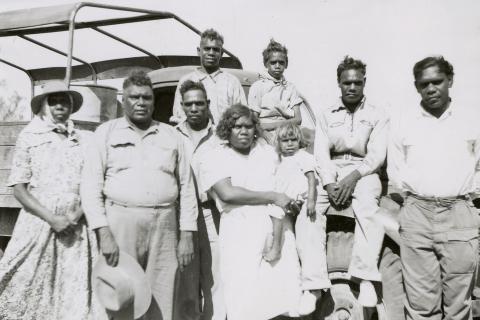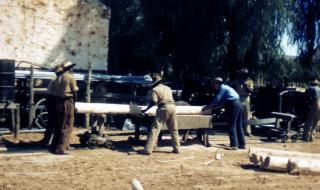
Skins, leather and industry at Hermannsburg
Pastor F.W Albrecht constantly sought to help make the mission financially independent. He experimented with ways to create employment opportunities for people at Hermannsburg. One of these enterprises was the tannery producing tanned skins, leather goods and kangaroo skin rugs.
Read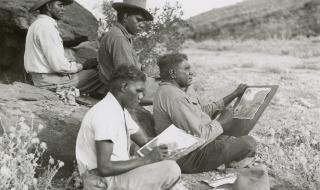
Albert Namatjira
Albert Namatjira’s name is synonymous with the Central Australian outback. Throughout the 1950s, 1960s and 1970s, Albert was probably the only Aboriginal artist’s name that most white Australians would have been familiar with. He is one of several artists that together comprised the Hermannsburg watercolour school and some of the art from this period can still be seen today at the mission.
Read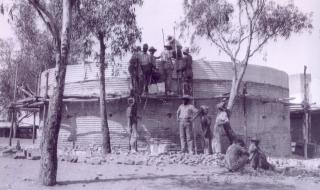
Kuprilya Springs Pipeline and Tank
By the time yet another long drought at Hermannsburg broke in December 1929, 85% of the children at the mission had died, many adults were left permanently weakened, 3,000 head of cattle and most of the horses had been lost. An ambitious plan was developed by Pastor F.W Albrecht to pipe water from Kuprilya Spring to the mission station.
Read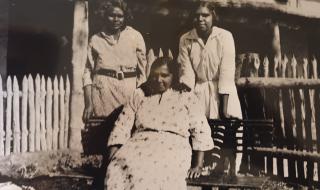
Marianne Graetz
Loved by the missionaries’ children, Marianne (pronounced in the German style ‘Marianna’) Graetz worked for both the Strehlow family and the Albrecht’s.
Read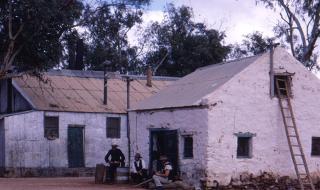
The bakehouse and dining room
Feeding the mission was always a challenge! The bakehouse, dining room was built during the period when Pastor F.W Albrecht was the chief missionary. It is currently the visitor centre.
Read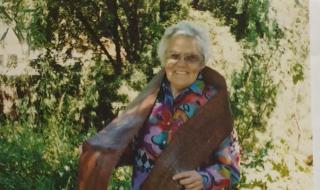
Carpet Snake Memories
Snakes are a fact of life in the Australian countryside but that doesn’t mean that you have to like them! The ‘little Helene’ in these anecdotes was the child of Freidrich Wilhelm and Minna Albrecht. These are her memories, as recounted to her niece Ruth. They provide a glimpse of family life on the mission at that time.
Read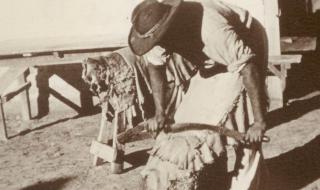
The Albrecht years 1926-1952
Pastor Friedrich Wilhelm Albrecht and his wife Minna Maria Margaretha (nee Gevers) inherited the task of implementing Pastor Stolz plan to make the mission more financially independent. This was the time of assimilation polices in Australia and the focus was on equipping people for a modern world.
Read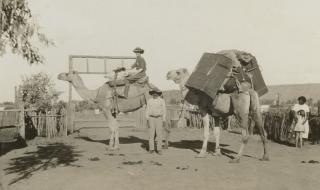
Theodor Georg Heinrich Strehlow (1908-1978)
Ted or Theodor Georg Heinrich (T.G.H.) Strehlow’s story is fascinating. The son of the missionary Carl and Frieda, he spent his formative years growing up on Hermannsburg Mission, leaving only on the tragic journey on which his father died. He returned to Central Australia many years later as the local patrol officer and anthropologist and picked up where his father left off recording the culture of the Arrarnta people and their neighbours.
Read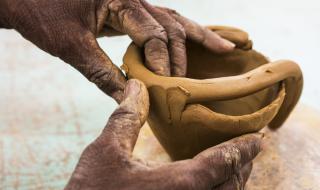
The Hermannsburg Potters
Pottery did not exist in Arrarnta culture before the coming of Europeans, however the Hermannsburg Potters demonstrate the adaptive and continually evolving creativity of Arrarnta people.
Read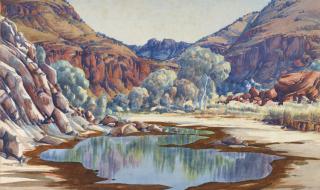
The Hermannsburg School of Painting
The watercolour traditions of the Namatjira school of painting need no introduction. Hermannsburg mission has a large collection of these paintings.
Read
The Hermannsburg Choir
The records of the mission often mention the beautiful sounds of the Arrarnta people with their voices raised in song. Hermannsburg Mission has a long tradition of music including both pastoral music and popular country and western.
Read


